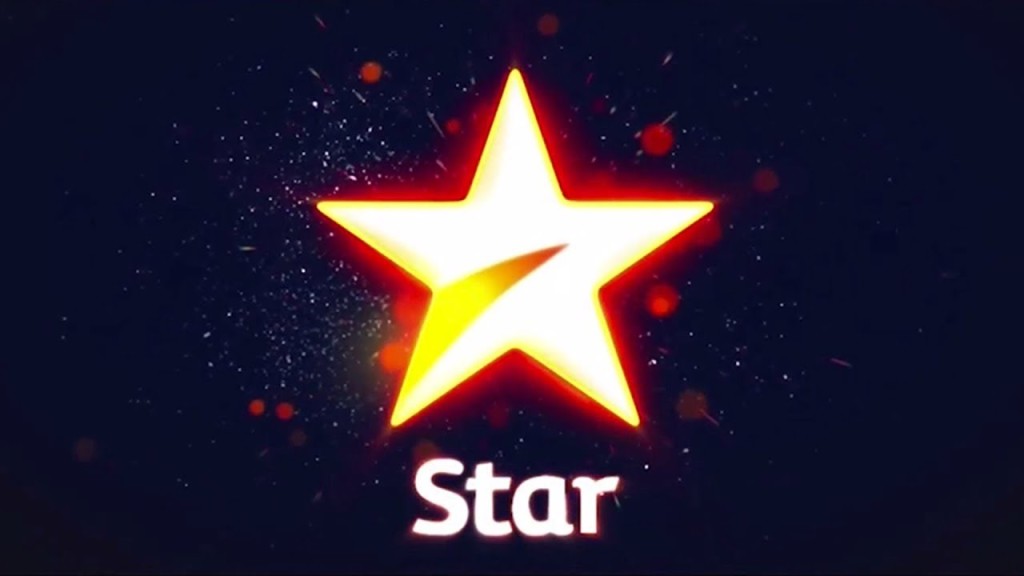Who should first decide a dispute relating to unfair terms of business between Multisystem Operator (MSO) and a TV Channel regarding discriminatory discounts by the later? Should it be the Sector regulator, the Telecom Regulatory Authority of India (TRAI) or the Fair Market Watchdog, the Competition Commission of India (CCI)? Should CCI be constrained from inquiring into a competition issue which it finds to exist after a prima facie scrutiny on facts simply because the TRAI or TDSAT is also empowered under the TRAI Act, 1997 to decide disputes between various stakeholders in the Telecom and Broadcasting sectors? Should the writ jurisdiction be exercised liberally by the High Court to interfere in competition issues which should ideally be left with the expert statutory body on Competition, the CCI? Can a sector regulator be expected to have a better understanding on competition issues?
This debate , despite having been settled by the Supreme Court in 2018 vide its famous judgment in the Bharti Airtel Case refuses to die and was revived again by the Bombay High Court vide its order dated 08 April 2022 when it stayed the prima facie order dated 28 Feb 2022 passed by the CCI directing investigation against Star India Private Limited , the largest Television & Entertainment network in India including its subsidiaries and Group Company, Disney Broadcasting (India) Limited, and Asianet Star Communications Private Limited for alleged abuse of dominant position by extending discriminatory discounts.
After the above mentioned Supreme Court judgment in Bharti Airtel and Vodafone cases in December 2018 , the debate was reopened by the same Bombay High Court vide its earlier judgment dated 16 Oct 2019 by setting aside two similar prima facie orders dated 27& 31 July 2017 passed by CCI directing investigation against Star TV , Sony TV and the Indian Broadcasting Federation (“IBF”) alleging that Star and Sony had adopted anti-competitive market practices, owing to their strategic position in the broadcasting market by imposing unfair terms and limiting their services to less Distribution Platform Operators such as NSTPL in violation of Section 3 and 4 of the Competition Act, 2002 (“the Act”). CCI has challenged this order in the Supreme Court and its SLP is pending.
Background
Competition Commission of India (“CCI”) vide its order dated 28.02.2022 had directed investigation against Star India Private Limited (“SIPL”), the largest Television & Entertainment network in India including its subsidiaries and Group Company, Disney Broadcasting (India) Limited, and Asianet Star Communications Private Limited (Collectively referred to as ‘the OPs’) for the alleged abuse of dominant position by extending discriminatory discounts.
The information was filed by Asianet Digital Network (P) Ltd (“ADNPL”/Informant), a Multi System Operator (MSO) engaged in the business of providing digital TV services, predominantly in Kerala and also operates in Karnataka, Andhra Pradesh, Telangana, and Odisha.
Allegations:
It was alleged by the informant that OPs are discriminating against ADNPL in not extending the discounts, which are offered to its competitors and such discriminatory discounts being unfair violate the provision of Section 4(2)(a)(ii) of the Act. Further it was alleged that OPs are denying market access to the Informant as due to the discriminatory discounts, the Informant is unable to compete in the downstream market of distribution of TV channels given the unfair advantage OPs has conferred upon the Informant’s competitors.
It was further alleged by the informants that in contravention to the new regulation, Telecommunication (Broadcasting and Cable) Services Interconnection (Addressable Systems) Regulations, 2017 (Interconnection Regulations 2017) and the Telecommunication (Broadcasting and Cable) Services (Eighth) (Addressable Systems) Tariff Order, 2017 which cap the total discount (15% of MRP) and distribution fees (20% of MRP) payable to distributors at 35% of MRP and mandate that broadcasters offer discounts based on fair, transparent, and non-discriminatory terms, Star India is offering special discounts of up to 50% (instead of 15% as per Interconnections Regulations 2017) to Kerala Communicators Cable Limited (KCCL) because of which the informants is losing its customers. Informant further alleged that OPs chose an indirect way to provide these discounts to circumvent the New Regulatory Framework of TRAI by way of promotion and advertisement payments to the main competitor of ADNPL in Kerala viz. KCCL, through high valued advertising deals, the complaint alleged.
For assessment, the informants had suggested a broader relevant market of “provision of broadcasting services in Kerala” and further subcategorised in terms of language and genres i.e.:
- ‘’Provision of broadcasting services of Malayalam general entertainment channels in the state of Kerala”;
- “Provision of broadcasting services of Malayalam movie channels in the state of Kerala”; and
- “Provision of broadcasting services for sports channels in the state of Kerala”.
And held that Star India private is in a dominant position on account of its significant market share, size and economic resources since it is a part of the global media conglomerate, dependence of consumers and its countervailing power.
CCI Analysis
Relevant Market
For investigation, CCI delineated the relevant market as ‘market for provision of broadcasting services in the State of Kerala’. Further for assessing the dominance the CCI considered the following points:
- Star India has around 50 entertainment channels and over 15 sporting channels with exclusive content of the major sporting events such as ICC, IPL, ODIs, Wimbledon, French Open, etc. making access to its bouquet of channels indispensable for any MSO operator, especially when some of the most popular, as per TRPs, regional and nation-wide channels belong to the Star India.
- The rating for the regional affiliate Asianet (100% subsidiary of Star India and Star India’s Malayalam general entertainment channel) for week 52 of 2021, is 1127 in comparison to 262 of Flower TV who is the closest competitor which means Asianet Channel has more than four times more viewership than the nearest competitor channel.
- Star India is a part of Disney group which has global revenue of USD 65.3 billion and has total assets of USD 201.5 billion.
- As per SIPL’s financial statements, revenue was Rs. 14,337.46 crores in the financial year ending 31.03.2020. Being part of the Disney group, SIPL and its group companies are present across the entire value chain of the media industry from content generation to the Over the Top (OTT) platform.
Based on market share, the dependence of consumers, Size and resources of the enterprise (being part of a global media conglomerate), vertical integration of the enterprise, and countervailing power, the Commission prima facie concluded that Star India enjoys a position of dominance in the relevant market delineating the Informant Asianet Digital Network.
Assessment of Alleged Abusive Conduct:
CCI noted that KCCL (Competitor of the Informant) was getting the channels at about 30% of the MRP with about 70% discount (special discounts of up to 50% added with distribution fee of 20%) whereas the maximum permissible discount under the New Regulatory Framework is capped at 35% i.e., a minimum of 20% distribution fee and other marketing discounts of maximum 15% (combined, both capped at 35%).
The impact of such discount discrimination was that KDNPL was constrained to price its channels at a higher price than that of KCCL and ultimately pay the price by losing consumers consistently whereas KCCL has gained new consumers. The Informant was ultimately offering its services at a loss-making price just to prevent the subscriber base from migrating to KCCL’s services but in vain.
It was further noted that ADNPL’s subscriber base fell from about 14.5 lakh in April 2019 to about 11.76 lakh in September 2021 while the subscriber base of KCCL went up from 21.3 lakh in April 2019 to 29.35 lakh in September 2021.
Prime facie order directing investigation –
Based on the above findings CCI concluded that, the alleged discriminatory conduct of price discrimination between different MSOs of SIPL has resulted in a significant loss in the consumer base of the Informant and therefore prima facie appears to be violating the provisions of Section 4(2)(a)(ii) and 4(2)(c) of the Act. Accordingly, CCI directed the Director General (DG) to cause a detailed investigation into the matter.
Interim relief application
Further the informant had also filed an application under section 33 of the Act seeking interim relief “That during the pendency of the matter, the Commission may be pleased to direct SIPL to disclose the additional discounts granted to KCCL (in the form of marketing/ advertising expenses) or otherwise and provide signals to ADNPL at the same effective license fee (after deduction of all additional discounts) as charged to KCCL.”
In this regard CCI vide its separate order dated 28.02.2022 held that:
- The Informant had not been able to project any higher level of prima facie case warranting a positive direction as sought for by the Informant at the interim stage.
- The Informant had also not been able to satisfy as to how the impugned conduct would cause an irreparable harm to the Informant which cannot be compensated in terms of money.
- The Commission is also not persuaded that balance of convenience lies in favour of the Informant.
Based on the above findings CCI concluded that no case had been made out by the Informant to grant interim relief, as prayed. Resultantly, the application for interim relief was dismissed.
Comment: The fair market watchdog, the Competition Commission of India (CCI) has been mandated to enforce the main provisions relating to prohibition of anticompetitive agreements and abuse of dominant position under the Competition Act, 2002 ( the Act) since 2009 and that of regulation of mergers and acquisitions since 2011. Whereas there have been no major issues with the speed of regulation of merger and acquisitions by CCI since 2011, the enforcement of the provisions relating to anticompetitive agreements and abuse of dominant position have been marred with repeated challenges on grounds of sectoral overlaps or forum shopping between CCI and the Sector specific regulators, such as in Telecom, Petroleum sectors and also the Copyright Boards, Controller of Patents etc.
The High Courts and the Supreme Court have played a major role in resolving the basic procedural issues affecting enforcement of competition law in India. Particularly, after the judgment of the Supreme Court in the Bharti Airtel & Vodafone case, it was widely assumed that not only the CCI but also the parties to such disputes would have understood the limits of jurisdiction between the CCI and the sector regulators .
However, the debate does not seem to abate! Since the CCI has challenged the Bombay High Court Order in Supreme Court and its SLP is pending , CCI cannot resile from its stand that it has the primary jurisdiction in such cases and to that extent its present order seems to be just . Interestingly, appeal against the order refusing to grant interim relief is also pending before NCLAT but it can not proceed due to pendency of the writ petition in the Bombay High Court against the prima facie order itself! The outcome on both NCLAT and Bombay High Court will be interesting to wait and watch!
#Star #Disney #Competition #TRAI #CCI #abuseofdominance








